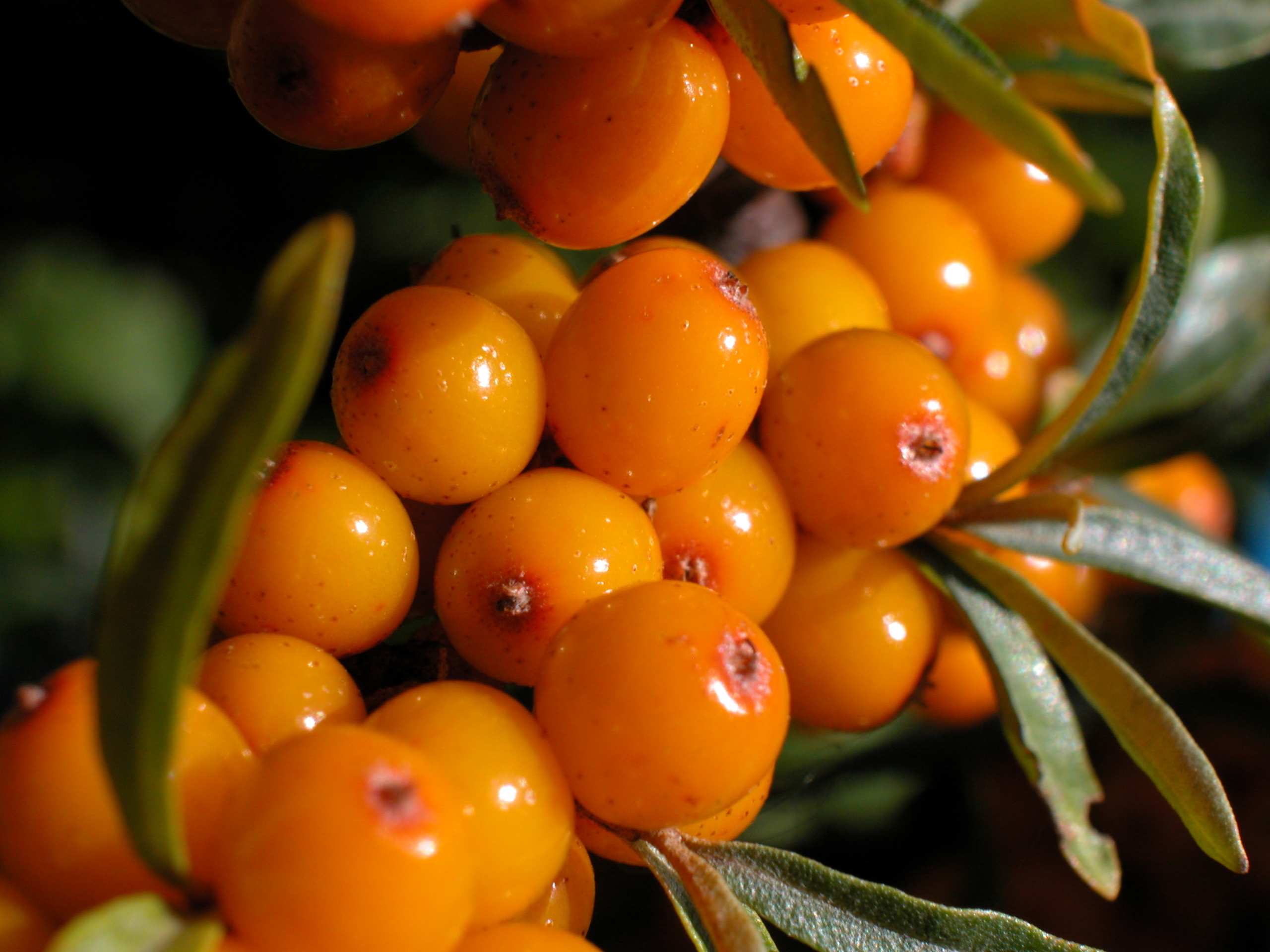
December 15, 2014 – An attractive shrub bearing fingers of golden fruits, seabuckthorn has been grown in Canada primarily for its esthetic purposes and ability to block wind and help conserve soil. After almost 30 years of research and development at Agriculture and Agri-Food Canada (AAFC), this shrub is looking to come out of the field and into the supermarket.
Bill Schroeder, a researcher at AAFC’s Agroforestry Development Centre in Indian Head, Sask., is the recognized North American expert on this budding bush and the first scientist to initiate a comprehensive seabuckthorn research program. The Agroforestry Development Centre has the only North American bred cultivars available, which has been instrumental in the development of the Canadian seabuckthorn industry.
Seabuckthorn has been touted as the new super fruit in the same breath as goji and pomegranate. It possesses rare features found in only a handful of plants: a balanced concentration of essential fatty acids and oils, 5-hydroxytryptamine (serotonin) in the peel of the stem and berries, plus some of the highest antioxidant activity among medicinal plants. Besides its nutritional values, the shrub is also one of the few non-legume nitrogen fixing species.
“Thanks to its high concentrations of vitamins C and E, carotene, flavonoids, amino acids and essential oils, the value-added opportunities for seabuckthorn products are numerous – food and drink, nutrition supplements, cosmetics, veterinary care, and dyes – to name a few,” said Schroeder.
Schroeder’s extensive research has resulted in a breeding strategy aimed at improving yield, fruit characteristics, harvest efficiency and thornlessness. He’s narrowed down 25,000 genotypes to 1,000, then finally to 32 superior individuals. With an eye to thornlessness, Schroeder has developed eight high yield cultivars that are extremely hardy and adapted to cold, semi-arid continental climates.
Schroeder and collaborating AAFC researchers at Summerland Research Centre in BC have also developed new orchard management protocols, which include propagation techniques, orchard design, weed and pest management, harvesting techniques and pruning for maximum productivity and quality.
The greatest challenge seabuckthorn poses is the difficulty in harvesting the berry from its tight cluster on thorn-covered branches.
The traditional method – manual labour – is cost prohibitive (estimated at 75 per cent of production cost). Many methods have been experimented with, ranging from tree and branch shakers, vacuum suction, and quick freezing fruit laden branches.
AAFC research continues, with a concentration on breeding and agronomic strategies with an added focus on genomics tools and biochemical traits. This new research will speed up the cultivar development of key phyto-chemical traits such as flavonoids, phenolics and fatty acid profiles, all of which will lead to even more potential for the seabuckthorn.
With a concentrated effort on all fronts – market development, agronomic technology, cultivar development and processing – the Canadian prairies could one day find itself a major grower and supplier of seabuckthorn fruit and products.
Print this page
